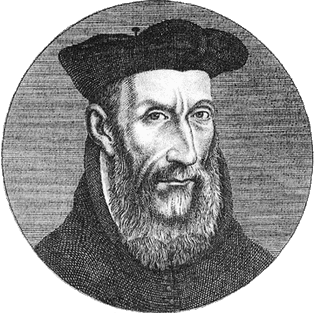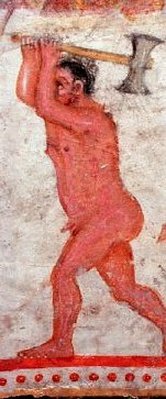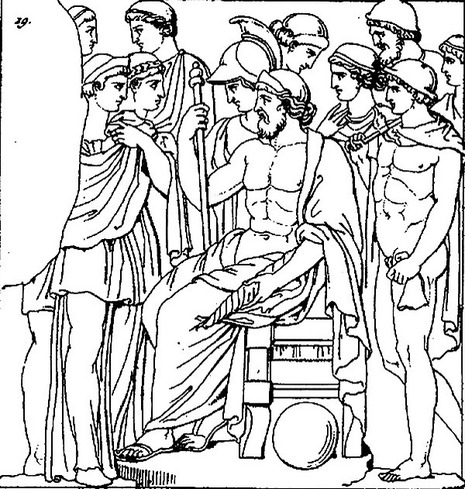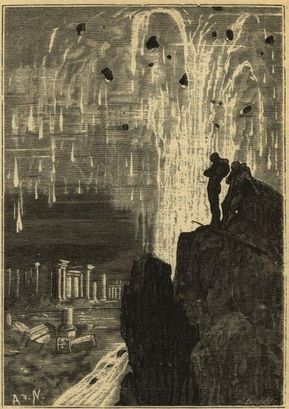ONLINE EXCLUSIVE
ALIENS AND ANCIENT TEXTS
What Taking Ancient Texts Literally Really Means
Jason Colavito
2011
The so-called ancient astronaut theory proposes that extraterrestrial beings visited the earth in prehistoric times and were responsible, directly or indirectly, for ancient cultural achievements. To support this claim, ancient astronaut theorists rely upon three fundamental pillars of evidence: ancient architecture, ancient art, and ancient texts. It is the last of these three pillars that I would like to examine here.
The value of what ancient astronaut theorists (AATs) refer to as “ancient texts” (in reality a stew of poetry, prose, oral history, and later missionary or anthropological reports) cannot be underestimated. When they are not outright fabricating them, AATs believe that these ancient texts are a literal record of prehistoric events. According to these theorists, ancient people were something akin to stenographers, incapable of recording anything than the literal truth about what they saw and experienced, though some distortion may have occurred later in time. The theory’s most prominent proponent, Erich von Däniken, explained this idea in the theory’s key text, Chariots of the Gods?, in 1968:
The value of what ancient astronaut theorists (AATs) refer to as “ancient texts” (in reality a stew of poetry, prose, oral history, and later missionary or anthropological reports) cannot be underestimated. When they are not outright fabricating them, AATs believe that these ancient texts are a literal record of prehistoric events. According to these theorists, ancient people were something akin to stenographers, incapable of recording anything than the literal truth about what they saw and experienced, though some distortion may have occurred later in time. The theory’s most prominent proponent, Erich von Däniken, explained this idea in the theory’s key text, Chariots of the Gods?, in 1968:
The key to this phrase is, of course, the “if” clause.
Similarly, Giorgio Tsoukalos, the head of the Archaeology, Astronautics, and SETI Research Association (AAS-RA) and a talking head and “consulting producer” on the History Channel’s popular Ancient Aliens documentary series, put it this way:
Similarly, Giorgio Tsoukalos, the head of the Archaeology, Astronautics, and SETI Research Association (AAS-RA) and a talking head and “consulting producer” on the History Channel’s popular Ancient Aliens documentary series, put it this way:
|
Even after the "evidence" or the "artifact" was lost, hidden, or destroyed, the memories and recollections pertaining to the object and/or the visitors associated with it, remained. Facts were preserved orally through ritual traditions of significant events which happened a long, long time ago, dating back decades, centuries, or possibly even longer. Using this inherent form of "recording," actual - at that time highly significant - events in the remote past were preserved over the course of millennia. These accounts should thus be used in the careful analysis of ancient myths and traditions containing intricate descriptions of "confrontations with technological content and background".
|
|
According to the AATs, a “careful analysis” or the texts shows that the “gods” of ancient mythology are in fact accurate traditions of extraterrestrial beings whose superior technology made them seem magical and godlike. Further, descriptions of doomed cities like Sodom and Gomorrah are literal reports of nuclear explosions, and descriptions of Hindu flying chariots are first-hand accounts of alien spaceships. The publisher of von Däniken’s 2002 book, The Gods Were Astronauts, writes in the book's publicity materials that the author entertains “the suggestion, based on a thorough examination of ancient texts, that alien beings employed high-tech vehicles in epic aerial battles” (emphasis added).
But such speculations are supportable only if we are justified in taking “ancient texts” literally. In order to justify a literal interpretation, AATs would need to show that ancient texts are verifiably accurate and that they consistently describe true events in a recoverable and understandable way. If these two conditions are not met, we end up with a situation like Nostradamus’ quatrains, where readers are actively creating their own (often contradictory) meanings from real or imagined suggestions in the text, leading to a multiplicity of interpretations.
|
The key issue in the ancient astronaut theory’s view of ancient texts is that where the gods appear, the gods are aliens. Humans are unable to entirely comprehend these aliens and attribute to them godlike power. As von Däniken wrote in Chariots, the first humans “had tremendous respect for the space travellers. Because they came from somewhere absolutely unknown and then returned there again, they were the ‘gods’ to them” (p. 52). Their spaceships, of course, were titular flaming “chariots.”
So, what becomes of what von Däniken himself admitted was “speculation” if the ancient texts fail to support the idea that the gods came from the sky in fiery spaceships?
Let’s look at some “ancient texts” and find out.
So, what becomes of what von Däniken himself admitted was “speculation” if the ancient texts fail to support the idea that the gods came from the sky in fiery spaceships?
Let’s look at some “ancient texts” and find out.
|
I’d like to start with Herodotus (c. 484 – c. 425 BCE), an obviously ancient author, and one that AATs have had no trouble citing when his material meets their purposes. For example, von Däniken cites Herodotus in Chariots and repeatedly in 1996’s Eyes of the Sphinx. According to Herodotus, the Thracians had a god named Salmoxis (Zalmoxis), who was their main deity, their savior god, and their lawgiver. Now, according to the ancient astronaut theory, if it has any predictive value, we should expect this god to have come from the sky and to have a flying saucer. What does Herodotus say of him? This Salmoxis I hear from the Hellenes who dwell about the Hellespont and the Pontus, was a man, and he became a slave in Samos, and was in fact a slave of Pythagoras the son of Mnesarchos. (Histories 4.95, Macaulay translation) Further, besides being unforgivably human, Salmoxis fails even the most basic test of ancient astronautics: He isn’t even from the sky! [Salmoxis] was making for himself meanwhile a chamber under the ground; and when his chamber was finished, he disappeared from among the Thracians and went down into the underground chamber, where he continued to live for three years. (Histories 4.95) That’s right: Salmoxis lived underground. Now, of course Herodotus doesn’t say he came from underground, but as a human neither did he come from the sky. |
Of course this is merely one god, and an obscure one. Surely, the Greek gods, whom von Däniken claimed were extraterrestrials in his 2000 book Odyssey of the Gods, and whom Giorgio Tsoukalos announced on Ancient Aliens lived in a flying saucer on Mt. Olympus, have better support in the “ancient texts” for their extraterrestrial bona fides?
Here is Cyprian, writing in 247 CE, in treatise 6.1, On the Vanity of Idols:
Here is Cyprian, writing in 247 CE, in treatise 6.1, On the Vanity of Idols:
|
That those are no gods whom the common people worship, is known from this: they were formerly kings, who on account of their royal memory subsequently began to be adored by their people even in death. Thence temples were founded to them; thence images were sculptured to retain the countenances of the deceased by the likeness; and men sacrificed victims, and celebrated festal days, by way of giving them honour. Thence to posterity those rites became sacred, which at first had been adopted as a consolation. (trans. Robert Ernest Wallace)
|
But perhaps this is too recent (though it should not be since von Däniken has no trouble in Chariots citing Norse sagas from 1200 CE as “ancient texts” recording prehistoric traditions). Let’s look at what Cicero (106-43 BCE) has to say in De natura deorum (3.53), where the Republican Roman orator relates “the theory that these gods, who are deified human beings, and who are the object of our most devout and universal veneration, exist not in reality but in imagination” (trans. H. Rackham).
Such a philosophy derives from the work of the fourth century BCE Greek mythographer Euhemerus whose books, unfortunately, do not survive. His ideas, however, were preserved in the works of Diodorus Siculus and Plutarch, who explains that Euhemerus spread atheism "by describing all the received Gods under the style of generals, sea-captains, and kings, whom he makes to have lived in the more remote and ancient times, and to be recorded in golden characters in a certain country called Panchon…" (De Iside et Osiride 23, Goodwin translation).
Such a philosophy derives from the work of the fourth century BCE Greek mythographer Euhemerus whose books, unfortunately, do not survive. His ideas, however, were preserved in the works of Diodorus Siculus and Plutarch, who explains that Euhemerus spread atheism "by describing all the received Gods under the style of generals, sea-captains, and kings, whom he makes to have lived in the more remote and ancient times, and to be recorded in golden characters in a certain country called Panchon…" (De Iside et Osiride 23, Goodwin translation).
So, we see that some “ancient texts” state that the gods were merely human beings promoted by time and ignorance to the status of gods. On what basis can we discount these texts while privileging other texts that hew closer to the ancient astronaut theory’s views? The answer, of course, is that we cannot. Of course, it is possible to argue that these texts represent a later development, or that they represent later efforts to interpret earlier myths that were in turn influenced by aliens. But this brings us to a paradox.
On one hand we have actual, unambiguous ancient texts that literally state that the gods were not aliens but humans. And on the other hand we have texts that AATs have interpreted as seeming like they depict 1960s-era astronauts. So which do we believe: the ancients’ actual words, or von Däniken’s and Tsoukalos’ reconstructions of what they believe some (but not all) of those words mean?
According to the rules of the ancient astronaut theory, as laid down by von Däniken and Tsoukalos above, we must assume that “ancient texts” are literal and accurate, while discounting the possibility of interpretation or subjective judgment, since according to the AATs, ancient people lacked the imagination or the ability to create fantasy wholesale. As von Däniken wrote in Chariots: “Even imagination needs something to start it off. How can the chronicler give descriptions that presuppose at least some idea of rockets and the knowledge that such a vehicle can ride on a ray and cause a terrifying thunder?”
On one hand we have actual, unambiguous ancient texts that literally state that the gods were not aliens but humans. And on the other hand we have texts that AATs have interpreted as seeming like they depict 1960s-era astronauts. So which do we believe: the ancients’ actual words, or von Däniken’s and Tsoukalos’ reconstructions of what they believe some (but not all) of those words mean?
According to the rules of the ancient astronaut theory, as laid down by von Däniken and Tsoukalos above, we must assume that “ancient texts” are literal and accurate, while discounting the possibility of interpretation or subjective judgment, since according to the AATs, ancient people lacked the imagination or the ability to create fantasy wholesale. As von Däniken wrote in Chariots: “Even imagination needs something to start it off. How can the chronicler give descriptions that presuppose at least some idea of rockets and the knowledge that such a vehicle can ride on a ray and cause a terrifying thunder?”
|
Therefore, we must also ask what “imagination” led Euhemerus to suggest the gods were humans? What fact led to a thousand years of Greco-Roman “secret” traditions that the gods were mere human beings? To complicate matters further, the father of “alternative” history, Ignatius Donnelly, chose to interpret the ancient texts I have cited above literally in his Atlantis: The Antediluvian World (1882) to argue that the Greek gods were in fact ancient kings of Atlantis: “The history of Atlantis is the key of the Greek mythology. There can be no question that these gods of Greece were human beings. The tendency to attach divine attributes to great earthly rulers is one deeply implanted in human nature.” He then went on to interpret the rest of Greek mythology symbolically, to argue that it was a distorted reflection of the events of the last days of Atlantis. As the reader has likely realized, this exercise is predicated on incorrect assumptions. Ignatius Donnelly, Erich von Däniken, and Giorgio Tsoukalos have chosen to interpret some “ancient texts” literally and others symbolically, mostly according to how well these texts support their preconceived notions. As we have just seen, this ad hoc method supports diametrically opposed results with equal certainty. Any attempt to impose a blanket rule—even the ancient astronaut theorists’ own rule, observed mainly in the breach, that texts should be taken at face value—inevitably produces a paradox whereby “ancient texts” confirm and deny the same “facts.” |
The reason for this should be obvious: “Ancient texts” are not monolithic, literal records of what happened in the past. They were written by different authors for different purposes in different times and places. Every ancient document has its own unique history, composition, biases, and (for some) even false or fictitious elements. To truly explore ancient literature is to understand these facets of these works and to analyze them according to a methodology established prior to the attempt to use the texts to justify a prefabricated theory.
The AAS-RA ancient astronaut organization describes ancient texts as including:
The AAS-RA ancient astronaut organization describes ancient texts as including:
|
Myths and other legends telling about observations - including details - that can hardly be attributed to fantasy. […] there are new, astonishing interpretations possible when the "ET factor" is included. Descriptions mostly appear as circumscriptions here, where the unknown is compared to things known in the respective era and culture using the principle of "Looks like...". |
But isn’t this exactly what the AATs themselves are doing—cherry-picking ancient literature for random paragraphs and incidents that “look like” their childhood fantasies of Apollo-era NASA rockets and spacesuits? As I have just demonstrated, cherry-picking the ancient texts can equally well “prove” that the gods, far from being aliens, simply never existed at all.
Of course, that particular picked cherry also has the benefit of being true.
Of course, that particular picked cherry also has the benefit of being true.









